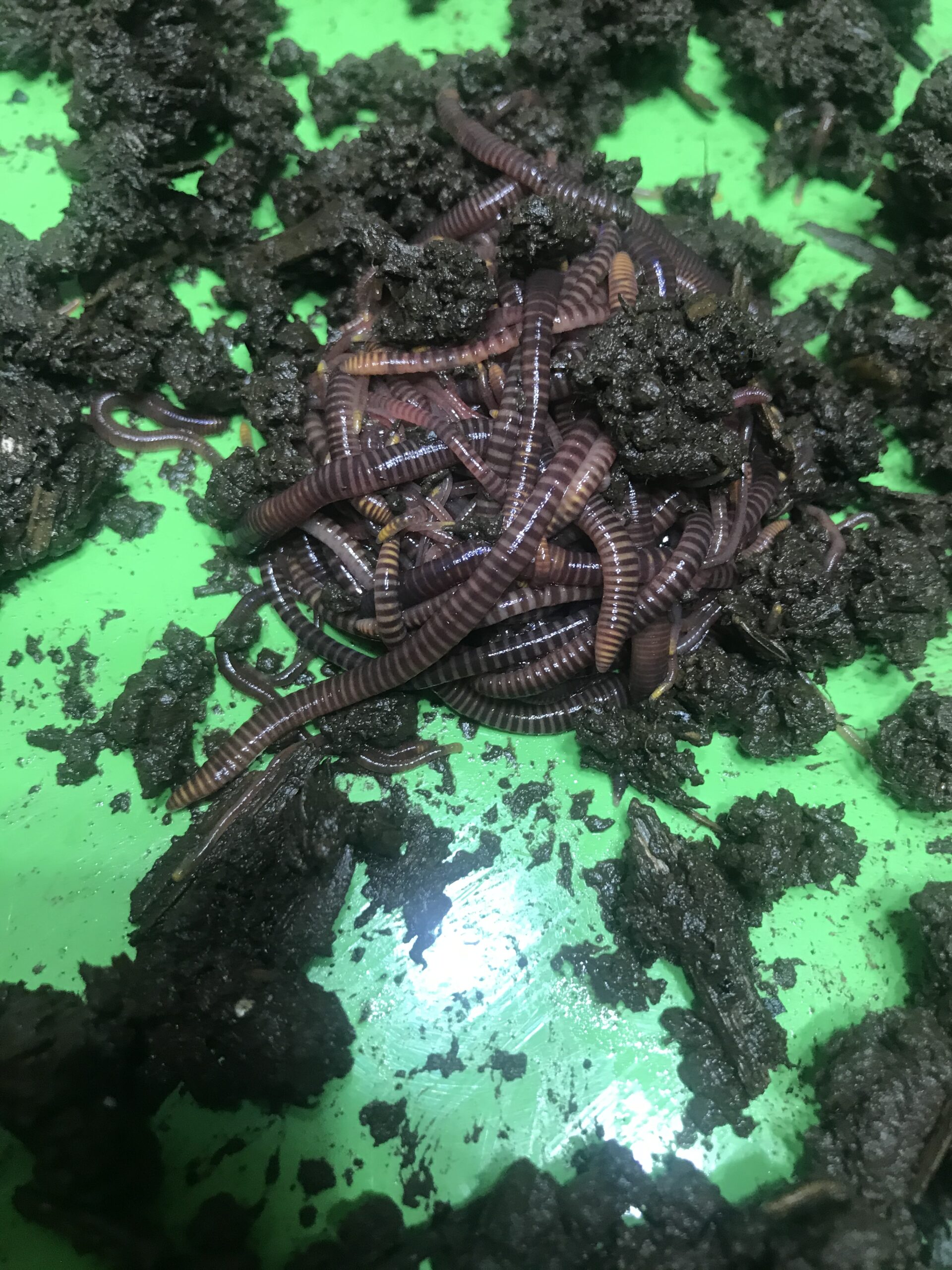The unseen farm animals
I grew up in the 1960s on a farm with sheep, goats, horses, cows, a dog, and countless cats. In those days our family had a gender-based division of labor, where my three sisters did housework while my brother and I did outside chores. I wouldn’t be caught dead washing dishes because that was “girls’ work” but I was perfectly happy pitching tons of manure from the barn into piles outdoors where it was left to cook for a few months until it had cooled enough for the worms to move in. Tilling it into the gardens I never thought anything of the worms. My first contact with the idea of raising worms on purpose, was in Okinawa, Japan circa 1980. I was teaching at an agricultural high school when a friend invited me to his farm to see his worms. He lifted what looked like a haphazard pile of carboard to reveal countless worms living in and under it. I didn’t become active in vermiculture for another two decades, but that visual brain etching still guides me today.
Twenty years later, redworms took up residence in some soggy bales of straw I had left out in the rain for a couple years. To capture some of them I built a set of stackable of 7’x2’ rectangular frames using treated 2x4s with 1/4” wire mesh across the bottoms. Each tray was the depth of the broad side of a 2×4. I set the bottom tray on the ground with a sheet of plywood under it to discourage the worms from leaving, and filled it completely with 3.5” wide strips of cardboard packed in on edge vertically. I put the worms in the second tray with some dirt and began piling on our daily kitchen scraps. Those worms ate all the kitchen scraps my family of 4 could produce for the next 10 years. When the second tray filled, I added the third and sometimes fourth trays. Every few months I removed the bottom tray which was nothing but vermicast (worm poop) and dumped it in my little garden plot.
I was vaguely aware that three “marketable” products could be harvested, including worms, vermicast, and something called worm tea, but I didn’t know how to harvest any of those “products” and was too busy to find out. I kept the worms covered out of the direct sun in the summer, but let them almost freeze in the winter. I did nothing to keep their environment from becoming anaerobic, read no books on worm husbandry, and was perfectly happy that all my kitchen scraps sank down into the trays and disappeared. The nearby cherry tree stump that I had cut down sprouted and grew new trunks over 8 inches in diameter and taller than the neighbor’s house within 5 or 6 years and bore better cherries than ever before. Please stay tuned for more of this journey through the wormhole.
